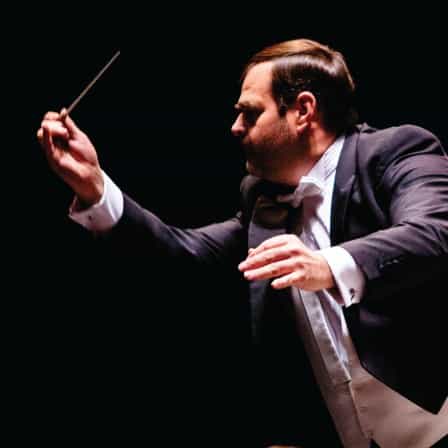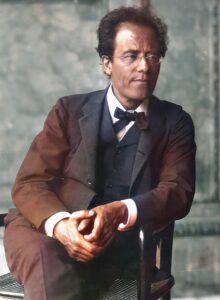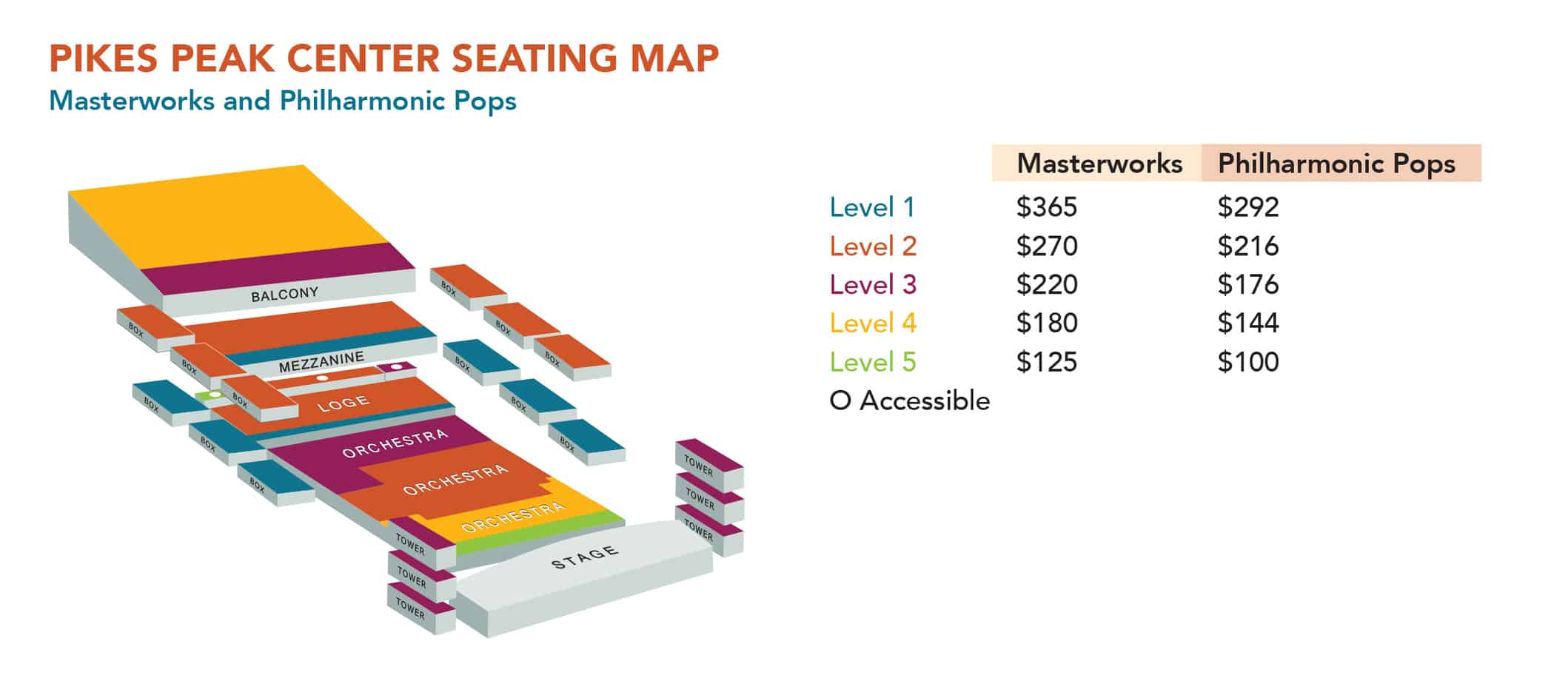


Mahler 9
190 S. Cascade Ave
Colorado Springs,
CO
80903
United States
+ Google Map
Program
Mahler Symphony No. 9
Artists
Josep Caballé-Domenech Conductor
About The Performance
A revelation. Simply breathtaking. Gustav Mahler’s last completed symphony will reverberate in our hearts as Music Director Josep Caballé-Domenech ends his twelve-year tenure with the Colorado Springs Philharmonic.
Join us for Colorado Springs Philharmonic Pre-Concert talks. Go behind the curtain and inside the score with these 30-minute pre-concert conversations.
Read More
Symphony No. 9 in D Major
GUSTAV MAHLER (1860 –1911)
Composer: Born July 7, 1860, Kalischt, [now Kaliště, Jihlava in the Czech Republic], Bohemia; died May 18, 1911, Vienna
Work composed: 1909-10
World Premiere: Bruno Walter led the Vienna Philharmonic on June 26, 1912
Instrumentation: piccolo, 4 flutes, 4 oboes, English horn, 4 clarinets, bass clarinet, 4 bassoons (1 doubling contrabassoon), 4 horns, 3 trumpets, 3 trombones, tuba, timpani, snare drum, bass drum, bells, chimes, cymbals, tam tam, triangle, glockenspiel, harp, and strings.
“The symphony must be like the world. It must be all-embracing.” — Gustav Mahler, in a conversation with Jean Sibelius, 1907
Gustav Mahler’s symphonies, as the above quote suggests, are more than musical compositions; they are worlds unto themselves. Mahler conceived them as such, and they envelop the listener in a realm complete with its own language, symbolism, and meaning. This is where interpretations of Mahler’s music, particularly the Ninth Symphony, become exquisitely, fascinatingly complicated, and even problematic. Any discussion of Mahler’s Ninth Symphony must address the extent to which the meaning assigned to this work has been mythologized. Ever since its premiere in 1912, the Ninth Symphony has been interpreted as Mahler’s “farewell to life.”
According to reviews, letters from friends and associates (and, through no small measure, the self-aggrandizing recollections of Mahler’s wife Alma), the four movements of the Ninth Symphony are Mahler’s departure from life, love, and mortal existence. Mahler’s own superstitions encouraged this line of interpretation. It was Mahler’s belief, and 19th century Romantic conceit, that ninth symphonies were composer-killers: Beethoven and Schubert completed nine symphonies, respectively, and Bruckner died trying to finish his ninth. The tragic events of Mahler’s life in the two years preceding the Ninth Symphony also provide a context for understanding it as a farewell. In July 1907, Mahler’s four-year-old daughter Maria died of scarlet fever. Soon thereafter, Mahler himself was diagnosed with a fatal heart condition. His doctors told Mahler to reduce his stress and cut back on his conducting schedule, but the composer was emotionally and temperamentally unable to comply (Interestingly, Mahler did not ultimately die of his heart ailment, but of a streptococcal blood infection. Before antibiotics, such infections were often fatal.)
Later that summer, Mahler was forced out of his position as conductor of the Vienna State Opera, likely due to the widespread and vicious anti-Semitism embedded in the Opera community and in Viennese society generally at the time. When Bruno Walter led the Vienna Philharmonic in the premiere of the Ninth Symphony barely a year after Mahler’s death, it was understandable, even natural under those circumstances, to view the Ninth as Mahler’s “farewell to life.” But is that what Mahler himself intended? In a letter written from New York early in 1909, Mahler wrote to Walter, “I am thirstier for life than ever, and find the ‘habits of existence’ sweeter than ever.”
Hardly the sentiments of a man obsessed with death, this comment suggests Mahler had a greater awareness of life’s essential fragility, an awareness that inspired him to embrace life rather than withdraw from it. “I have been working very hard and I am just putting the finishing touches to a new symphony,” Mahler wrote to Walter in June 1909. “ … The work itself … is a very satisfactory addition to my little family. In it something is said that I have had on the tip of my tongue for some time …” The first movement is generally interpreted as Mahler’s struggle with – and inevitable acceptance of – death. Mahler himself wrote a number of comments in early drafts of the score, particularly in the first and last movements. One comment, “Leb’wohl!” (Farewell!), is written over a theme similar to Beethoven’s “Les Adieux” (Farewell) Piano Sonata, Op. 81a.
It is tempting to infer meaning from these comments, but as musicologist Vera Micznik points out, “the inscriptions create an interesting dialog between the composer and his own text. But the ‘truth’ meant in that dialog with regard to the meaning of the music will never be known, as it is not known exactly what Mahler had in mind when he wrote them: Did he refer to the genesis of his musical ideas? Did he try to tell what the music meant? Did he mean to record what was going through his head as he was composing the music?” Whatever the comments meant to Mahler, he chose not to include them in the final draft or published score of the Ninth Symphony.
This omission suggests these “comments” were private thoughts not meant for public scrutiny. The first movement is considered by many Mahler’s most accomplished symphonic writing. It is vast in every sense, from its duration (about half an hour) to the sweep of its emotional arc. The music begins with an arrhythmic rhythm played softly by the cellos, harps and horn, which Mahler uses as a unifying concept. (Leonard Bernstein likened the irregular pulses to Mahler’s own weakened heartbeat). The “heartbeat” returns at the movement’s climax, marked fff, “with utmost violence.” The second violins play the primary melody, a gentle, resigned sigh of utmost simplicity. Mahler transforms this basic material in an endless variety of ways, and in such a manner that the transitions from one iteration to the next sound organic and inevitable, rather than created. The transparent texture of the opening intensifies as the full orchestra is heard. A contrasting section features a tempestuous, ardent counter-theme that flits between D major and D minor, with excursions into more distant key areas. The musical building blocks of the original violin melody are the source material for all that comes after.
The music shifts from brassy quasi-military marches to chamber music passages for smaller groups or soloists. Towards the end of the movement, Mahler reprises the primary melody, accompanied by the ominous pounding of timpani. The music ebbs and fades by means of a long coda, which gradually dissolves into silence. The jaunty second movement feels like a bizarre juxtaposition, after the poignancy of the first. In the score, Mahler wrote “in the tempo of a leisurely ländler, somewhat awkward and crude.” This Austrian peasant dance, which figures prominently in so much of Mahler’s earlier music, appears in three guises. It first emerges like a drunken guest lurching through a wedding reception. With an abruptness unusual for Mahler, the second ländler, announces itself in a completely unrelated key with extreme haughtiness, as if to make amends for its bumbling predecessor. There is something amiss with this ländler,, however. It whirls us through a bewildering array of harmonic keys without settling anywhere, and its attempts at lightness are cancelled by the pompous bellowing of the lower brasses. The third ländler is pure Mahler: gentle, wistful, serene with a touch of melancholy.
Eventually the distinctive qualities of each ländler, break apart, and the music splinters into barely recognizable fragments of its former personas The Rondo-Burleske is marked “very defiant.” The grotesqueness of the music is matched by masterful orchestration and highly sophisticated counterpoint, anticipating by several decades the symphonies of Dmitri Shostakovich. Mahler interrupts the derisiveness with a gentle interlude for a solo trumpet, which transforms an angular, disjointed tune heard earlier in the movement into a calm, reassuring melody. The bold rebelliousness of the opening music returns with even greater vehemence to conclude the rondo. “There is no more irony, no sarcasm, no resentment whatever; there is only the majesty of death,” said Mahler of the final Adagio. It opens with a cri de coeur from the violins; the full string section then intones a hymn of solemn, formal grace.
Mahler’s use of keys is unusual in this section; phrases don’t end in expected harmonic resting places. This, along with a short phrase for solo bassoon, injects a hint of anxiety, but the sumptuousness of the hymn quickly smoothes it away. The bassoon melody returns, however, now played by the double basses and accompanied by an unearthly high countermelody in the violins and flutes. This juxtaposition of high and low outer voices, and the sudden absence of the thick harmonies of the hymn, creates an aural void. Mahler moves back and forth between the hymn and the void, with no attempt to reconcile the two. The hymn gradually disintegrates into several lyrical interludes of chamber music. Eventually these coalesce into a huge orchestral climax, but this is interrupted by a phrase from the first violins, which Mahler borrowed from his 1905 song cycle Kindertotenlieder (Songs on the Death of Children). The brief passage corresponds to the words “The day is so beautiful on those heights!” The music dwindles to a barely audible pppp, which Mahler marked ersterbend (dying away).
Read LessConcert Sponsors
Robert D. Lee and Susan A. Ashley
Pamela and Bob Allen Street
The September 7th Fund, established by Ben and Raynelle Kuckel
The Gazette
dpiX
Concert Co-Sponsors
William and Mary Lou Mullin Fund in honor of Bob Allen and Pamela Street
Sally Sharpe and John R. King III
Guest Artist Sponsors







